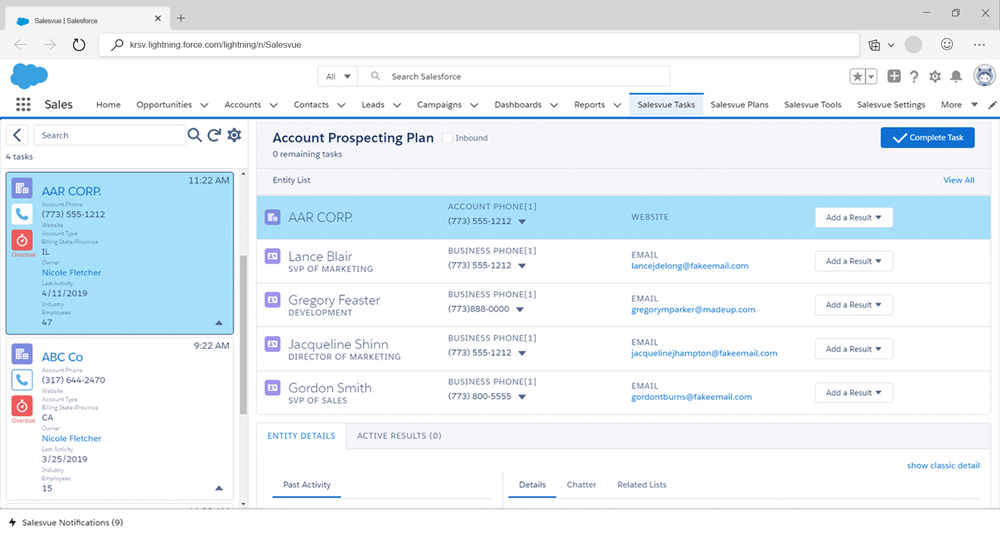Introduction
Account based selling and account based marketing have become a key part of the sales process for many companies. This HubSpot blog highlights some key data showing this. For a bit of overview, did you know that 70% of marketers use ABM, one in five accounts targeted in ABM turns into a SQL and ABM outperforms other initiatives according to 87% of marketers. Account based strategies are a must have in today’s selling environment, so here’s your guide to everything you need to be successful.
What is Account Based Selling?
Account based selling isn’t something the normal public typically gets exposed to. Essentially, account based selling, or ABS, is when your team targets an entire company (an account) as opposed to individual prospects. Sales and marketing (which is where the connection to account based marketing comes in) coordinate their efforts to create an experience and specific content for this account where they are targeted as a whole. Rather than only going after one person in the company, ABS goes after all the decision makers. As you can imagine, this works much better in B2B sales rather than B2C sales.
Account Based Selling Strategy
If your team is looking to leverage ABS, there’s a few things to keep in mind. Since ABS is so targeted, it’s easy to dive feet first in but then realize you weren’t prepared for success. If you’re looking to add a new element to your B2B efforts, check out these tips for the best account based selling strategy.

How to Develop a Strategy
The first step in creating an ABS strategy is to pick the target accounts. Knowing what your team has success in and knowing what type of accounts you want to reach can help point you in the right direction. From there, you must identify and build out your personas to help understand the key decision makers at a specific account. Then, figure out a way to align common pain points your target account has with solutions you offer. It might also be beneficial to understand what trends are happening in your target account’s industry so you can help tie relevant information over to them.
Best Practices
This strategy development goes along with best practices. Digging deeper into what we just talked about, there’s some other things you can do to help ensure this strategy is successful. The main best practice we recommend is to arm your team with the proper tech stack. This means making sure their tech stack includes a good CRM tool as well as a good sales engagement platform. The CRM tool helps coordinate all the customer data within a single account. The sales engagement platform helps reach these people, but we’ll touch on this later.
How Do You Do Account Based Selling?
In ABS, the coordinated execution of these best practices and strategy is essential. To get into some specifics, here’s how you do ABS. First, what you’ll need regardless of your current tools and then what to look for if you’re already utilizing Salesforce.
Build Buyer Personas
Building buyer personas are the first key part of successfully doing ABS. These personas are what will drive not only the content and messaging you create, but also the way in which you present them. But, just as a reminder, these “buyers” aren’t one-off prospects. These are whole accounts that your sellers will have to reach. So, you must gather the proper customer data linked with the account and come up with the key players in it.
Once you have found the decision makers, those that have control over the budget, those that may be leading the charge for change and any other important personas, it’s important to make note of them. Connecting with each of these personas is the main driver for your marketing efforts. Crafting content that resonates with these individuals is going to be important if your sellers want a chance at connecting with all of them which they will have to do.

Write Content
Once you’ve identified these personas, it’s time to create content. As mentioned, you must effectively reach each of these personas you deem to be most important in your efforts. Now, each of these personas will have different wants and needs, personalities, interest levels, and so on. So, it’s marketing’s job to create specific content to reach each person. This means tailoring different eBooks, video messages, infographics, checklists and more. Each piece of content must be relevant to the target’s pain points.
Formulate A Cadence
Once you have potential contacts in mind, and the right content to reach them, it’s time to decide how to get this content to them. Formulating a cadence essentially means figuring out the pattern and timing of how you’re making connections with these people. For example, this could mean calling someone on Day 1, sending an email on Day 4, then connecting with them on LinkedIn on Day 5. These are often built in sales engagement tools. These tools make it easy for every seller to follow along with these plans and can help organize their efforts towards completing them.
These connections should come at any frequency and order that reaches your personas most effectively. It doesn’t matter if you call them first or send an introduction email first. Whatever your team has found success in, go with that. Also, these cadences will allow your team access to see what’s working and what’s not for future ABS efforts.
Account Based Selling in Salesforce
If your team is already using Salesforce as your CRM, you’re on the right track toward your ABS goals. This will not only help build your buyer personas and account based selling prospecting since you’ll have access to contact data but will also help with the other pieces as well. We’ve outlined how you need a CRM tool as well as a sales engagement platform, but if you use Salesforce, this is made a lot easier.
We suggest combining Salesforce with a Salesforce-native sales engagement platform like Salesvue. By combining these account based selling tools to get customer data in Salesforce with the cadence creation capabilities of Salesvue in a single system, your ABS efforts will go through the roof. Don’t make your sellers use multiple tabs or browsers in their efforts. Give them all the tools they need in a single source of truth.

Conclusion
Account based selling can become a key factor in your B2B efforts, if it isn’t already. Coming up with the proper strategies, arming your team with the right tools, executing this strategy through the end can be the difference in landing some big accounts and coming up dry. Target these accounts with confidence knowing you have what it takes to become an account based selling star!
Category
Tags
Subscribe to Funnel Vision
Get the latest and greatest right in your inbox






